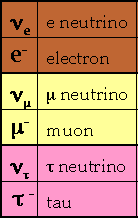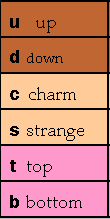
CERN is Europe's centre for research into particle physics. The key element of CERN's research over the last 20 years has been to accelerate particles to huge energies and then collide them - the collisions serve two purposes: firstly we can examine what matter is made of. Secondly we can use the energy of the collisions to create particles which do not normally exist in space but which will exist in more energetic regions of the universe and which would have existed in the ``big bang''. The department of physics at SWansea has strong links with CERN including strong links with the CERN theory division and though Mike Charlton's involment in the ATHENA experiment. At CERN there is a huge underground circular tunnel (27 kilometers long and about 100 metres underground just outside Geneva)through which particles and antiparticles are accelerated and stored preparitoory to collisions. At present, this tunnel is being converted for use from the pervious experiment LEP to the next major experiment LHC. At LEP electrons and positrons were asccelerated around the ring in opposite direcetions before colliding in one of the interaction areas. In LHC protons and anti-protons will be used instead. The experiment LEP came in two stages, LEP-I where the energy of the beam was just right to produce Z0 particles whose decays could then be studied and secondly LEP-II where the energy of the beams was inmcreased as far as possible to search for new particles. During LEP-II is was also possible to produce, and study pairs of W+ and W- particles. The purpose of these web pages is to allow you to identify for yourself some of the interesting events we have seen since then.
A simple example of the kind of collisions we study is shown schematically in the following picture:

This picture shows an electron (e-) and a positron (e+). A positron is the antimatter equivalent (or antiparticle) of an electron. The electron and postron fly towards one another at high energy. They collide to produce a Z0 particle. Because the initial e- and e+ have momenta which are opposite in direction and equal in magnitude the Z0 has no net momentum and is, therefore, stationary. After a very short time (about 10-25 seconds) the Z0 decays to produce a muon (µ-) and an antimuon (µ+). The muon and antimuon then fly apart "back to back" with one another.
We surround the place where the Z0 is produced with detectors, which enable us to see the particles produced when it decays.
We group the different sorts of elementary particles into families. The first family we call the "leptons":

In addition to the electron and muon, that we have met already, a third member
of this family also carries an electric charge; this particle is
called the "tau".
Each of these three particles has a partner called a "neutrino".
Neutrinos carry no electric charge and can travel large distances through
matter without interacting.
They leave no tracks in our detector although sometimes we can deduce that a
neutrino was produced.
(You'll see how later on!)

The "up" and the "down" quark can be found inside protons and neutrons
(which themselves can be found inside atomic nuclei).
The heavier quarks can be made at particle accelerators or by the interactions
of cosmic rays in the upper atmosphere, but don't occur naturally on earth.
In the following sections, first we explain a little bit about the detectors we use to see the diferent kinds of particles as they travel through our experiment. Then, in several stages, we explain how to identify the different kinds of particle interactions or "events" that can occur (with some helpful examples to get you started).
 Click here to proceed to the next part
of the program, which is
"The Detector and How to Understand the Event
Pictures".
Click here to proceed to the next part
of the program, which is
"The Detector and How to Understand the Event
Pictures".
 Back to Home Page with table of contents.
Back to Home Page with table of contents.